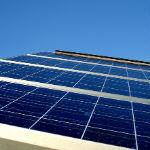 United States. A new anti-glare treatment, developed by engineers at the University of Illinois at Urbana Champaign in collaboration with researchers at the University of Massachusetts at Lowell, allows light to pass through without hindering the flow of electricity, a step that could increase efficiency in devices such as LEDs, solar cells and sensors.
United States. A new anti-glare treatment, developed by engineers at the University of Illinois at Urbana Champaign in collaboration with researchers at the University of Massachusetts at Lowell, allows light to pass through without hindering the flow of electricity, a step that could increase efficiency in devices such as LEDs, solar cells and sensors.
The coating is a specially etched, nanostructured thin film, which allows more light through a flat surface, but also provides electrical access to the underlying material – a crucial combination for optoelectronics, devices that convert electricity to illuminate or vice versa. The researchers, led by University of Illinois professor of electrical and computer engineering Daniel Wasserman, published their findings in the journal Advanced Materials.
"The ability to improve both electrical and optical access to a material is an important step toward higher-efficiency optoelectronic devices," said Wasserman, a member of the Micro and Nano Technology Laboratory in Illinois.
At the interface between two materials, such as a semiconductor and air, some light is always reflected, Wasserman said. This limits the efficiency of optoelectronic devices. If light is emitted in a semiconductor, a fraction of this light will never escape from the semiconductor material. Alternatively, for a sensor or solar cell, a fraction of the light will never reach the detector to be picked up and converted into an electrical signal. The researchers use a model called Fresnel equations to describe reflection and transmission at the interface between two materials.
Although such modeled surfaces aid in light transmission, they impede electrical transmission, creating a barrier to the underlying electrical material.
The researchers showed that their technique, which results in metal covering about half of the surface, can transmit about 90% of light to or from the surface. By comparison, the bare, patternless surface with any metal can only transmit 70% of the light and has no electrical contact.

























Leave your comment